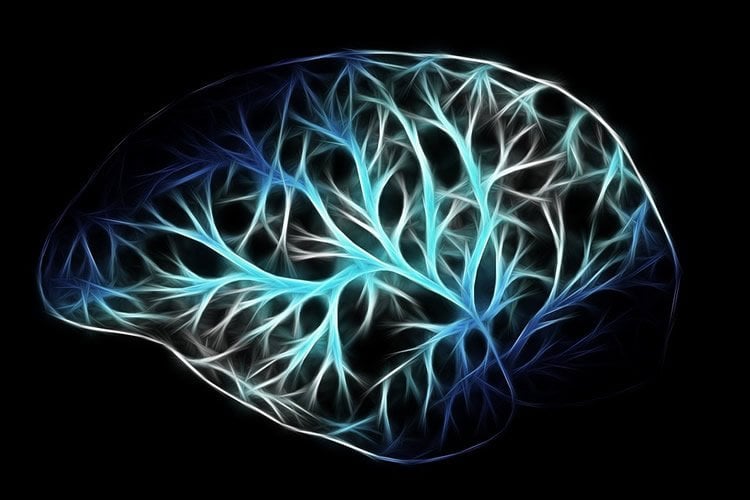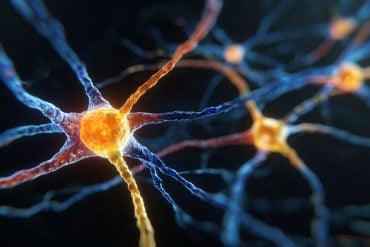Summary: Researchers report activating microglia may help reduce the imbalance between neuroprotection and neurotoxicity for neurodegenerative diseases.
Source: Mass General.
A group of Massachusetts General Hospital (MGH) investigators is proposing that targeting immune checkpoints – molecules that regulate the activity of the immune system – in immune cells called microglia could reduce the inflammatory aspects of important neurodegenerative diseases like Alzheimer’s disease, Parkinson’s disease and amyotrophic lateral sclerosis (ALS). In their review article published in the October issue of Nature Neuroscience, they discuss how uncontrolled activity of microglia contributes to neurodegeneration in these and other neurodegenerative conditions.
“Microglia have three essential functions: a ‘sentinel’ function that surveys and senses changes within the brain, a ‘nurturer’ function that promotes neuronal wellbeing through actions such as removing dying cells and debris, and a ‘warrior’ function that defends the brain against infections and toxins,” explains Joseph El Khoury, MD , of the MGH Center for Immunology and Inflammatory Diseases and the Division of Infectious Diseases, senior author of the report. “In healthy brains, immune checkpoints in microglia keep the ‘warrior’ function in check. Disruption of those checkpoints initiates or propagates neurodegeneration.”
While microglia have long been recognized as the innate immune cells of the brain, the MGH team is the first to delineate these three functions, based on patterns of gene expression within the cells. After detailing how microglia carry out these functions, the authors review how the processes can go awry in several neurodegenerative disorders:
- In Alzheimer’s disease, microglia are known to accumulate around amyloid-beta plaques, and mutations in several microglial genes can increase the risk of developing the disease. An inability of microglia to keep up with persistent production of amyloid-beta leads to the release of inflammatory factors that further compromise the cells’ ‘nurturer’ functions, eventually transforming them into a disease-associated form that induces persistent, damaging neuroinflammation;
- In Parkinson’s disease, activated microglia are known to be abundant in the substantia nigra, the brain structure that is damaged in the disease. PET studies have shown widespread inflammatory microglia early in the course of the disease, and evidence suggests that the same sort of ‘double-edged sword’ situation seen in Alzheimer’s disease – in which initially protective microglia escape regulation, leading to persistent damaging neuroinflammation – also occurs in Parkinson’s.
- In ALS, inflammatory microglia have been found near injured neurons in the brain of patients. In a mouse model carrying a mutant SOD1 gene – one of several genes that, when mutated, can cause inherited forms of ALS – microglia have been found to be protective at disease onset but neurotoxic at later stages.
The investigators also describe how initially protective microglia can escape regulation and become damaging in multiple sclerosis, Huntington’s disease, and several other neurodegenerative conditions.
The team identifies three potential immune checkpoints in microglia – Trem2, which regulates all three functions; Cx3cr1, which regulates the sentinel and nurturer functions, and the progranulin pathway, which also regulates sentinel and nurturer functions. Evidence points to dysregulation of both Trem2 and progranulin in Alzheimer’s disease, ALS and other disorders; and Cx3cr1 is known to alter the course of disease in animal models of Alzheimer’s disease, Parkinson’s disease, ALS and other disorders.

While immune checkpoint therapies for cancer – discovery of which recently received the Nobel Prize in Medicine – are designed to inhibit checkpoints that prevent the immune system from attacking tumor cells, in neurodegenerative disease the goal would be to activate checkpoints that could reduce and potentially eliminate out-of-control neuroinflammation, returning microglia to their healthy neuroprotective state. El Khoury and his colleagues are now working to improve understanding of how microglia contribute to neurodegeneration.
“Analyzing patterns of microglial gene transcription and regulation in several disease states, understanding how those patterns may be altered by aging and disease progression, and correlating those changes to microglial behavior is essential,” he says. “Expanding studies from animal models to human patients remains a challenge that will require development of new, reliable cellular models based on patient samples and additional technologies for imaging and analysis. And new techniques to incorporate microglia into three-dimensional organoids – miniature organs grown from living tissues – are a crucial next breakthrough that needs to be achieved.” El Khoury is an associate professor of Medicine at Harvard Medical School.
Suzanne Hickman, PhD, of the MGH Center for Immunology and Inflammatory Diseases is lead author of the Nature Neuroscience report. Additional co-authors are Saef Izzy, MD, Pritha Sen, MD, and Liza Morsett, all of the Center for Immunology and Inflammatory Diseases.
Funding: The article was prepared through support from National Institutes of Health grant RF1 AG051506.
Source: Terri Ogan – Mass General
Publisher: Organized by NeuroscienceNews.com.
Image Source: NeuroscienceNews.com image is in the public domain.
Original Research: Abstract for “Microglia in neurodegeneration” by Suzanne Hickman, Saef Izzy, Pritha Sen, Liza Morsett & Joseph El Khoury in Nature Neuroscience. Published September 26 2018.
doi:10.1038/s41593-018-0242-x
[cbtabs][cbtab title=”MLA”]Mass General”Regulating Microglial Activity May Reduce Inflammation in Neurodegenerative Diseases.” NeuroscienceNews. NeuroscienceNews, 18 October 2018.
<https://neurosciencenews.com/microglia-inflammation-neurodegeneration-10055/>.[/cbtab][cbtab title=”APA”]Mass General(2018, October 18). Regulating Microglial Activity May Reduce Inflammation in Neurodegenerative Diseases. NeuroscienceNews. Retrieved October 18, 2018 from https://neurosciencenews.com/microglia-inflammation-neurodegeneration-10055/[/cbtab][cbtab title=”Chicago”]Mass General”Regulating Microglial Activity May Reduce Inflammation in Neurodegenerative Diseases.” https://neurosciencenews.com/microglia-inflammation-neurodegeneration-10055/ (accessed October 18, 2018).[/cbtab][/cbtabs]
Abstract
Microglia in neurodegeneration
The neuroimmune system is involved in development, normal functioning, aging, and injury of the central nervous system. Microglia, first described a century ago, are the main neuroimmune cells and have three essential functions: a sentinel function involved in constant sensing of changes in their environment, a housekeeping function that promotes neuronal well-being and normal operation, and a defense function necessary for responding to such changes and providing neuroprotection. Microglia use a defined armamentarium of genes to perform these tasks. In response to specific stimuli, or with neuroinflammation, microglia also have the capacity to damage and kill neurons. Injury to neurons in Alzheimer’s, Parkinson’s, Huntington’s, and prion diseases, as well as in amyotrophic lateral sclerosis, frontotemporal dementia, and chronic traumatic encephalopathy, results from disruption of the sentinel or housekeeping functions and dysregulation of the defense function and neuroinflammation. Pathways associated with such injury include several sensing and housekeeping pathways, such as the Trem2, Cx3cr1 and progranulin pathways, which act as immune checkpoints to keep the microglial inflammatory response under control, and the scavenger receptor pathways, which promote clearance of injurious stimuli. Peripheral interference from systemic inflammation or the gut microbiome can also alter progression of such injury. Initiation or exacerbation of neurodegeneration results from an imbalance between these microglial functions; correcting such imbalance may be a potential mode for therapy.






